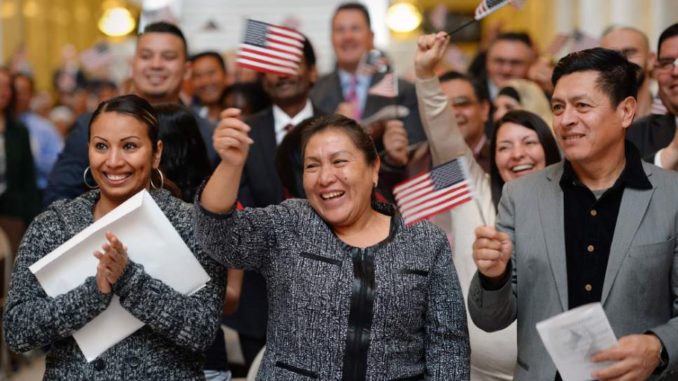
By Alex Nowrasteh
Forty-eight years ago, President Lyndon Johnson (D) signed the Immigration Act of 1965, the most comprehensive immigration reform in generations. Now, decades later, Congress is contemplating another serious immigration reform that would legalize millions of unauthorized immigrants and allow for increased legal immigration going forward. It is often said that we should learn from history, and immigration reform is no exception. A look back at the 1965 Act can inform today’s debate.
The 1965 Act was hailed by many as a major reform that partially reopened immigration. From 1790 to 1921, with the exception of the shameful Chinese Exclusion Act in 1882, the U.S. had mostly free immigration. Immigrants getting off the boat at East and West coast immigrant processing centers like Ellis Island were allowed to enter upon passing health and criminal inspections.
Ships full of immigrants bearing Italians, Jews, Russians and Poles did not sail up to American beaches and disgorge their human cargo in the hope that they would evade a Border Patrol (which did not exist until 1924). Because so many could come legally, unauthorized immigration was rare.
That ended in the early twentieth century with the Progressive Era’s emphasis on protecting labor unions. Beginning temporarily in 1921, and then permanently in 1924, new national origin quotas limited immigration to countries from Northern and Western Europe, whose immigrants were more skilled and less likely to join unions.
Worse, those laws were also inspired by the Progressive eugenics movement at the time. Northern and Western European immigrants were welcome because they were thought to be genetically superior. Eastern and Southern Europeans, Asians, and others were either barred outright or heavily restricted because of their supposed genetic inferiority.
 That sounds ridiculous today, but ninety years ago it was very serious. In fact, a commission established by Congress in 1907, the Dillingham Commission, confirmed that supposed inferiority. Based on poor statistical methodology and absurd reasoning, it claimed that 67 percent of Polish Jewish students and 64 percent of Southern Italians students were “retarded.” According to the report, Italian, Jewish, Eastern European, and Asian immigrants were so inferior that their assimilation into American culture would be impossible.
That sounds ridiculous today, but ninety years ago it was very serious. In fact, a commission established by Congress in 1907, the Dillingham Commission, confirmed that supposed inferiority. Based on poor statistical methodology and absurd reasoning, it claimed that 67 percent of Polish Jewish students and 64 percent of Southern Italians students were “retarded.” According to the report, Italian, Jewish, Eastern European, and Asian immigrants were so inferior that their assimilation into American culture would be impossible.
The national origin quotas that cropped up in the 1920s were not fully repealed until the Immigration Act of 1965 – that law’s best achievement. After that law, all countries became subject to numerical quotas.
While removing eugenicist laws was positive, the 1965 Act had two flaws. The first was that it put numerical limits on immigrants from Western Hemisphere countries like Mexico and Canada for the first time. Instead of returning to a pre-1921 immigration policy, the 1965 Act accepted arbitrary immigration restrictions as part and parcel of the system.
The second major flaw immediately preceded the passage of the 1965 Act. On its eve, the government shut down its last large scale guest worker visa program for lower skilled migrants. Called the Bracero Program, it had allowed laborers from Mexico to work on American farms temporarily. At its peak in the mid-1950s, the program allowed half a million workers a year to come here legally. Like the restrictionist laws in the 1920s, it was pressure from labor unions led by César Chávez and others that led to the demise of the Bracero Program.
The Bracero Program wasn’t perfect and had problems, many of which could have been solved by allowing migrants to switch jobs easily, but it was much better than the vast informal economy of unauthorized workers that developed as a result of its shutdown.
Bracero’s cancellation in 1964 leads some critics of immigration to blame the 1965 Act for causing unauthorized immigration, which surged after that year. But it was really the cancellation of Bracero, and the last legal way for low-skilled migrants to come here legally for work, that incentivized unauthorized immigration.
The 1965 Act improved American immigration policy by removing the eugenic rationale from the law, but two flaws kept it from achieving its full potential. On the 48th anniversary of the Immigration Act of 1965, let’s hope Congress has learned from that mistake and recognizes the benefits of increased legal immigration.
Alex Nowrasteh is the immigration policy analyst at the Cato Institute.
